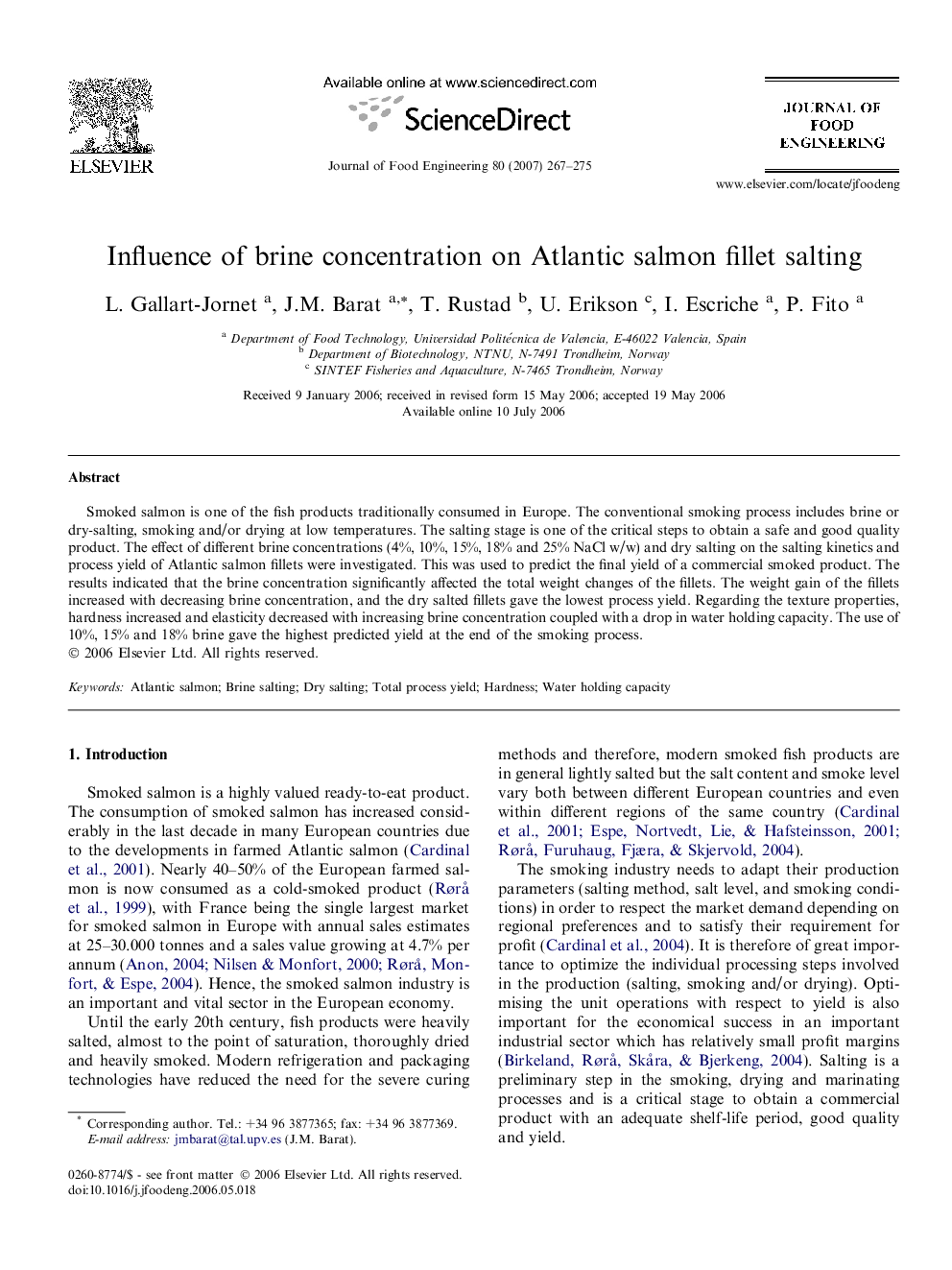| Article ID | Journal | Published Year | Pages | File Type |
|---|---|---|---|---|
| 226324 | Journal of Food Engineering | 2007 | 9 Pages |
Smoked salmon is one of the fish products traditionally consumed in Europe. The conventional smoking process includes brine or dry-salting, smoking and/or drying at low temperatures. The salting stage is one of the critical steps to obtain a safe and good quality product. The effect of different brine concentrations (4%, 10%, 15%, 18% and 25% NaCl w/w) and dry salting on the salting kinetics and process yield of Atlantic salmon fillets were investigated. This was used to predict the final yield of a commercial smoked product. The results indicated that the brine concentration significantly affected the total weight changes of the fillets. The weight gain of the fillets increased with decreasing brine concentration, and the dry salted fillets gave the lowest process yield. Regarding the texture properties, hardness increased and elasticity decreased with increasing brine concentration coupled with a drop in water holding capacity. The use of 10%, 15% and 18% brine gave the highest predicted yield at the end of the smoking process.
